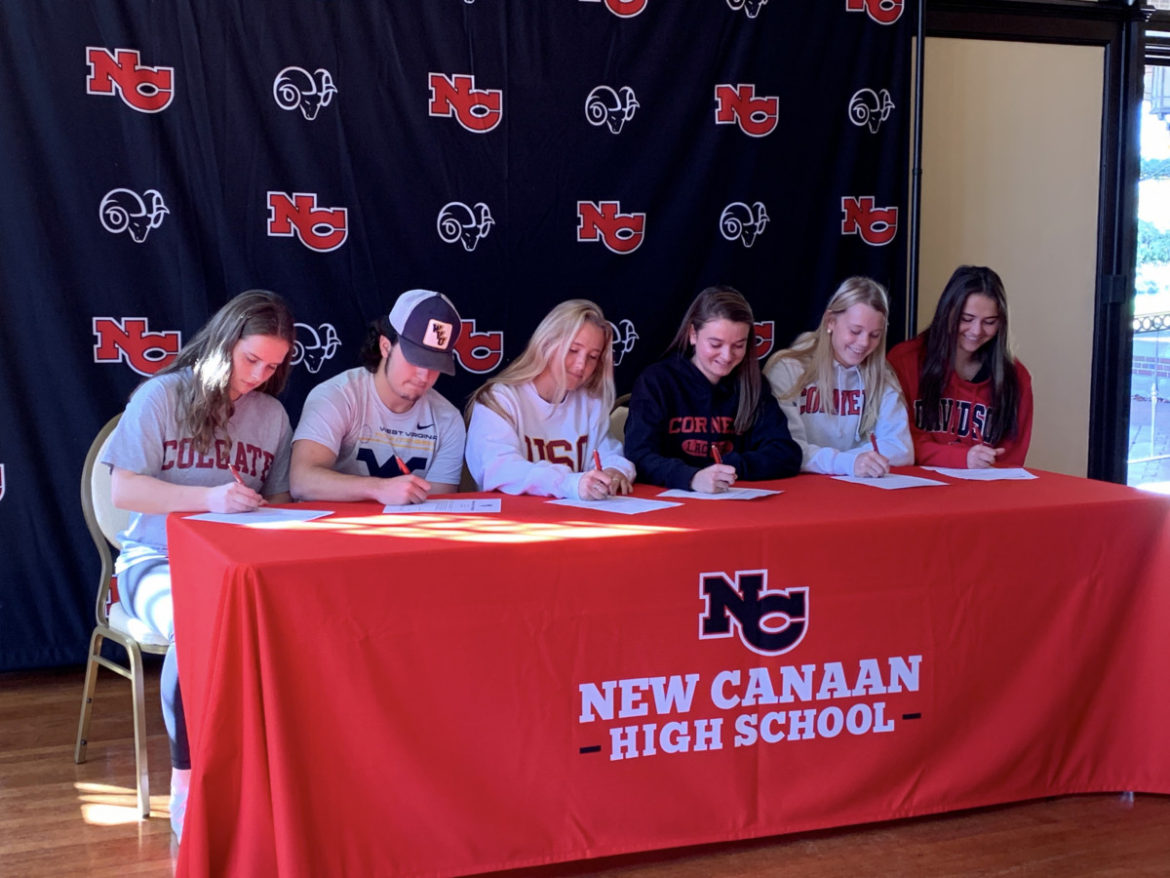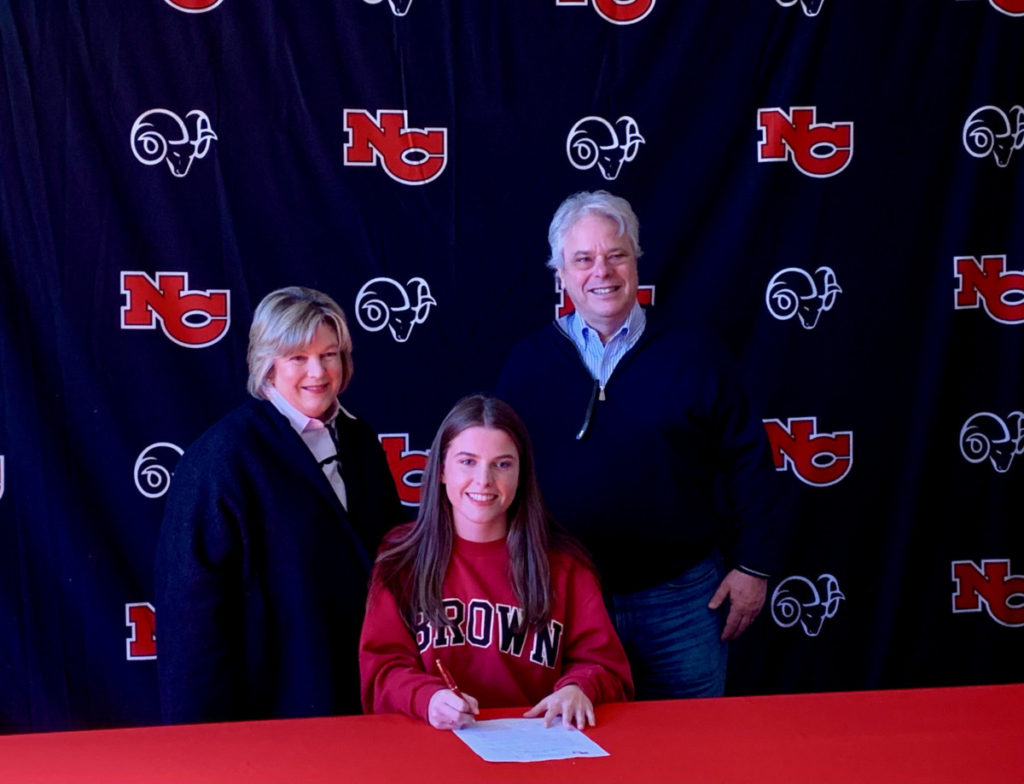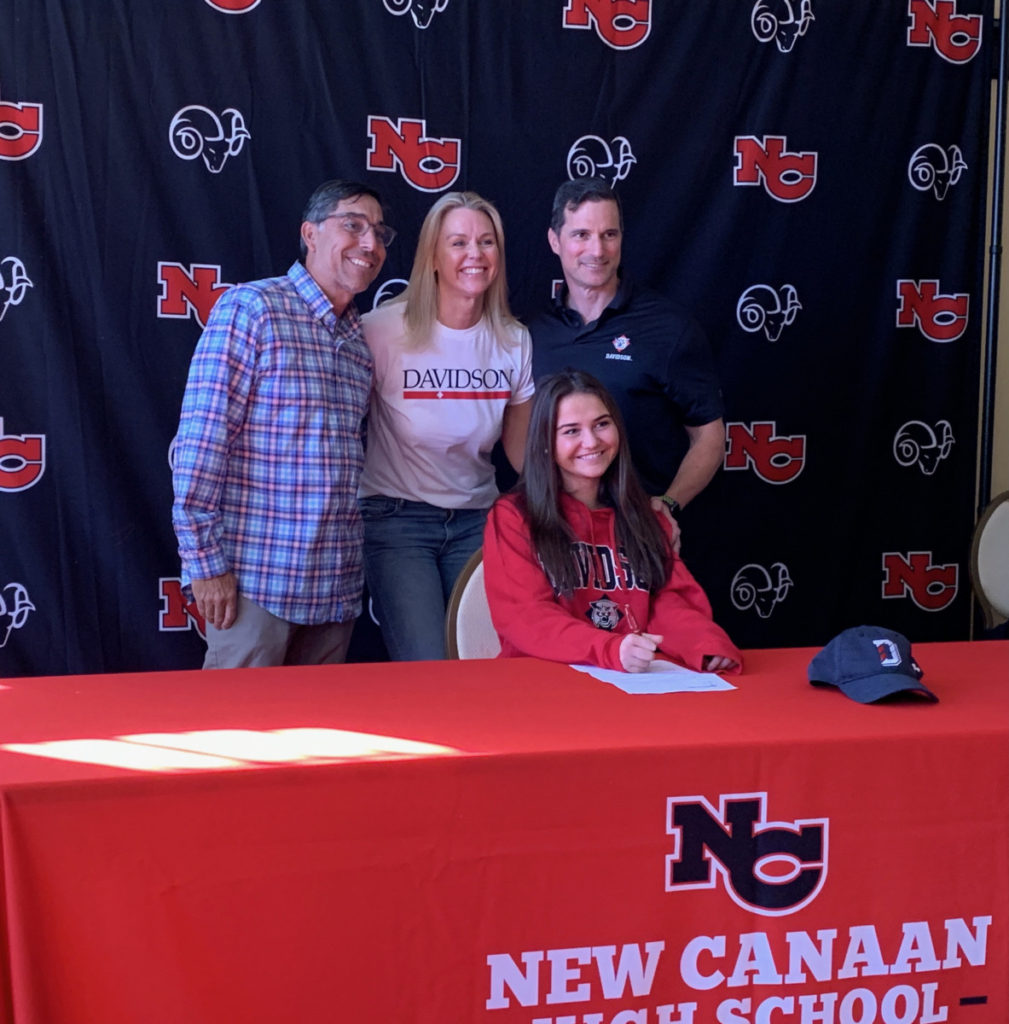Abbie Dymond, Sports Editor
@abbiedcourant
Eat, sleep, study, play. For many student-athletes, this is the regime. For those with phenomenal athletic talents, the next step after their high school career is playing at the collegiate level. Whether it be Division 1 (D1) or Division 3 (D3), there is a place for those who’ve determined they want to play in college. The process is different for every division, some more grueling than others, but having a determined mindset helps those accomplish what they want to pursue.
Zack Ramppen, a senior committed D1 to West Virginia University for baseball, says that in response to getting the process started, “getting out there, making a name for yourself and posting your stuff on social media” is the first crucial step in getting recruited. “Get seen in any way possible; make it your advantage,” Zack said.
One of the most important ways to be recognized by coaches is by going to showcases. Megan Lydon, class of 2021 plays field hockey D3 at Kenyon College and said camps not only get athletes recognized by coaches but help athletes realize if it’s what they want. “Going to a camp is what helped me decide that I want to go Division 3 because there were so many coaches there,” she said. “That snowballed the whole process for me.”
Megan also said that even if attending large-scale showcases isn’t important to your process, it’s still important to attend events like these. “While [large showcases]may not be imperative to your whole process, there are so many people there, and you at least get to dip your feet in the water.”
Lindsay Reihl, a guidance counselor at NCHS and a graduated D1 hockey player at Penn State, noted that when you’re starting the process, one of the most important things is to “think about the sport and if it’s something that you want to pursue in the long run, and how realistic it is that you can pursue it.”
One of the most critical things you should determine is the kind of time commitment you’re willing to give to your sport. The time commitment that you will face at a Division 1 school will be very different from the time commitment you will encounter at a Division 3 school.

For Division 3, it is common for your sport to take up to 4 hours out of your day, and for Division 1, it may take even longer. “We had to get into the locker room at 3:45, on the field at 4:20, start practice at 4:30, end practice at 7, took showers, went to dinner, left the athletics center at 7:45, so I was out for four hours. If you love it, it will work out,” Megan said.
For D1, Coach Kristin Woods said that playing D1 is similar to a job. “You’re really dedicating five hours a day to that sport,” which is something that you should determine you’re willing to do.
The key to balancing your academic and athletic demands in college is communicating with your professors. “Although the professors here are super, super understanding, I had a couple of moments with overnights during our season where we were in Indiana for a whole weekend, and I had a biology test the next morning at 8:10,” Megan said.
Looking to see if the school you’re interested in has tutor hours may prove to be important in balancing academics and athletics. West Virginia has tutor hours for freshmen, which Zach will be using next year.
Once you’ve determined that you would like to continue your athletic career in college, the next step is often to email coaches and fill out questionnaires. Maddie Haley, class of 2021, who swims D1 at Georgetown University said that one of the ways to start your process is by emailing college coaches. “You start by filling out questionnaires for the colleges that you are interested in, and then they will email you back if they’re interested in you as well.”
By emailing coaches, athletes do one of the most essential things in the recruiting process: establish a connection. “I know it’s different for each sport, but for team sports like field hockey, soccer, and lacrosse, establishing a connection with a coach is super, super important. You want them to remember you; you want to stand out to them,” Megan said.
When emailing coaches, Maddie said that it is vital to stay true to yourself. “I think sometimes people will get nervous and try to be someone that they aren’t. Coaches are just looking for people who are willing to be themselves and put themselves out there.”
After establishing a relationship with a coach and expressing interest in the school, the next step is sending a transcript to the coach. Megan compared reviewing transcripts to traffic lights. “The coaches send [your transcript]to the admissions office, so they can give you an answer, like yeah, you should get into our school, here’s an offer for you to play on my team or it’s not looking so good, you need to bring up your grades,” Megan said. “It’s like a red light, yellow light, or green light.”
When choosing a school, it is important that athletes don’t solely select a school based on its athletics. If you injure yourself and can no longer play, you want to still be happy at your school.
“You want to pick a college at a place where you feel comfortable and happy and like the vibe on campus, and that there are academic opportunities that align with what you want to study and pursue,” Ms. Reihl said. “If you tear your ACL and can’t play for a season, you still want to be at a place where you can enjoy your studies and have friends outside of your team.
The recruiting process is very complicated, and there are many aspects to consider. “It can get grueling at times when you don’t have faith in yourself because you think that it’s not going your way, but everything ends up working out,” Zack said.

Claire Mahoney/Brown/Lacrosse 
James “Cort” McNichol/Syracuse/Rowing 
Olivia Quinn/Davidson/Diving







